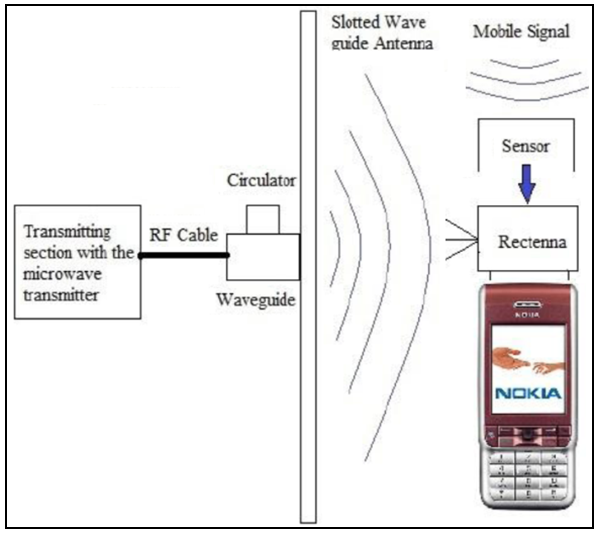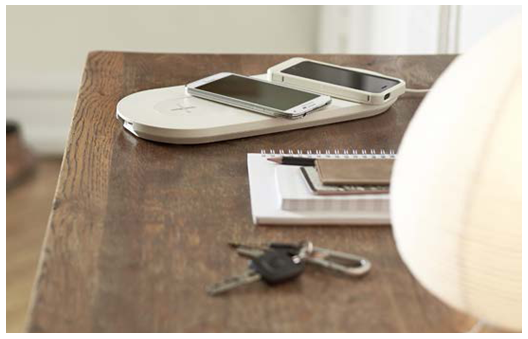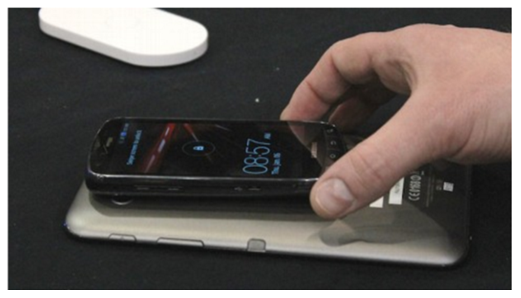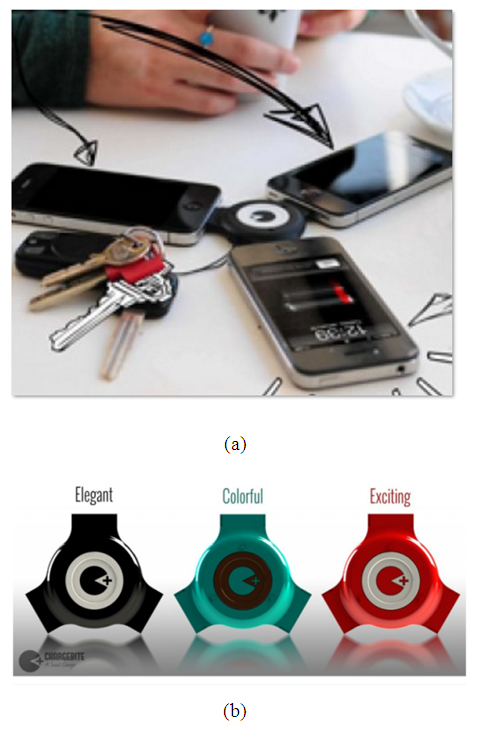-
Paper Information
- Next Paper
- Paper Submission
-
Journal Information
- About This Journal
- Editorial Board
- Current Issue
- Archive
- Author Guidelines
- Contact Us
International Journal of Electromagnetics and Applications
p-ISSN: 2168-5037 e-ISSN: 2168-5045
2017; 7(2): 31-37
doi:10.5923/j.ijea.20170702.02

Wireless Mobile Phones Charging – A Comprehensive Study
Ibrahim Yehya Dallal Bashi
Department of Electrical Techniques, Technical Institute of Mosul, Northern Technical University, Iraq
Correspondence to: Ibrahim Yehya Dallal Bashi, Department of Electrical Techniques, Technical Institute of Mosul, Northern Technical University, Iraq.
| Email: |  |
Copyright © 2017 Scientific & Academic Publishing. All Rights Reserved.
This work is licensed under the Creative Commons Attribution International License (CC BY).
http://creativecommons.org/licenses/by/4.0/

In recent years, an increasing development has been noticed in researches of wireless power transfer techniques to eliminate the use of the cables after Wi-Fi became widely utilized. When traveling, we could simply overlook about USB cables and the traditional chargers. Normally, the users of the mobile devices have the anxiety of power lack during carrying out a critical job and have no possibility of access to a charger. The users keen to always keep their mobile devices with electric power as much as possible. Also, power sharing techniques have been modified, based on user’s nearness mobile devices, that became able to get power from them. This paper will show an overview study and basis of the wireless mobile phones charging techniques.
Keywords: Wireless charging, Inductive charging, PAD, Solar cell, Fulton's charging, Chargebite
Cite this paper: Ibrahim Yehya Dallal Bashi, Wireless Mobile Phones Charging – A Comprehensive Study, International Journal of Electromagnetics and Applications, Vol. 7 No. 2, 2017, pp. 31-37. doi: 10.5923/j.ijea.20170702.02.
Article Outline
1. Introduction
- All over the world, there are billions of people utilize mobile devices such as tablets, smartphones and laptops. The growing in utilization of, for example smart glasses and watches i.e. wearables, expands this eco-system to high levels. The different tasks, for example, sending email, doing a phone call, finding location …etc. presented by these mobile devices, grow every day more and more bring our life easier also making us increasingly count on this equipment. However, this equipment is battery-powered and regularly recharged, usually by connecting them to a power cord [1] [2]. The traditional charger is normally used to recharge the rechargeable batteries, which is normally a power supply of ac to dc (in case that the mains is ac) or a power supply of dc to dc (in case that a car battery is used). A cord i.e. electric cable is used to connect the traditional charger i.e. the power supply to the required battery to be charged, which is normally placed in the portable device [3].Wireless power transfer (WPT) can be defined as the electric energy transmit to an electric load from a power source without using a physical connection between them. WPT is allowing mobile devices to be continuously charged conveniently, easily and without constraints of using a power cord. Hence an efficient method of transfer of electric power is required to transmit it from the charger to the mobile device across an air gap without utilizing wire or other material [4-16].In smartphones, the battery lives are short, it is unavoidable that the user can stand up to a certain case in which a critical job such as doing an emergency call, sending an urgent email or receiving contact information in the mobile phone may not be carried out. In addition, a recent analysis on users’ habits for battery charging present that there are many users who charge their mobile phones frequently with short time periods, and aimed to hold them with as much energy as possible [6] [17-21]. This is due to the worry of loss of the power during a critical job without possibility of approach to charging instruments. An alternative method of charging mobile devices is using the power of batteries of other mobile devices. All such devices in the closeness is very unlikely will drain their power of battery at the same time. Power sharing is the method, that could be a hopeful solution especially in urgent cases in which a little charge could be helpful to carry out the emergency job. However, there are good challenges of incentivizing the mobile devices users and minimizing the encumbrance of such operation on users [1].Wireless methods are always advantageous than cumbersome, untidy wiry networks. You can have a lot of options if the facility of wireless charging of mobile phones is somehow implemented. The need of different type of chargers by different manufacturers is totally eliminated [7] [22]. This research includes a comprehensive study of related literature of mobile phones charging techniques in order to gain wireless charging review. The advantages and disadvantages have been explained.
2. Wireless Charging Using Microwave
- The microwave charging set up consists of two sections: the first section is the transmitter and the other, located in the mobile phone side, is the receiver section. To carry out the mobile phones recharging anywhere you want without traditional charger this is achieved only when there is utilization of microwave signal which is transmitted from transmitter at a frequency of 2.45GHz [22].Typically, the transmitter design includes generation of a carrier signal, which is normally sinusoidal, optionally one or more frequency multiplication stages, a modulator, a power amplifier, and a filter and matching network to be connected to an antenna [22-26]. The antenna is of slotted waveguide antenna type [23-31] as shown in Figure 1.
 | Figure 1. Whole set up for microwave charging [24-26] [28] [29] [31] |
3. Inductive Coupling Wireless Charger
- Inductive power transfer technique is being utilized in various applications for transmitting power wirelessly. Chargers of inductively coupled type are being utilized for wireless charging of iPad, MP3 Player, mobile phones, and other handheld devices [34] [35]. WPT using inductive wireless charger can be included three parts. First, sender, the sender transmits electromagnetically power through inductive coils which provide a wireless transmit of power to receiver part. Second part is inductive coupling (sender coil and receiver coil), which acts as the antenna (sender antenna and receiver antenna), and forwards the power to the bridge rectifier. Third, bridge rectifier that converts the induced voltage from the ac to the dc voltage, and finally the dc voltage will recharge the battery and provide the load. Figure 2 depicts the block diagram of inductive WPT [3] [23] [34] [36-39].
 | Figure 2. Block Diagram of inductive WPT [35] |
4. Wireless Charger PAD
- QI is an interface standard developed by the Wireless Power Consortium for inductive electrical power transfer over distances of up to 4 cm (1.6inches) [23] [40] [41]. This system includes a transmission (charging) pad and a receiver (mobile phone) compatible to receive the transmitted power. The mobile phone is put on the charging pad (see Figure 3) and the charging process begins [5] [40] [41]. Various mobile manufacturers are working with the standard and that includes HTC, SAMSUNG, BLACKBERRY, NOKIA … etc. [42].
 | Figure 3. Wireless charging pad [44] |
5. Wireless Solar Cell Phone Charger
- Solar cell phone charger is a device which uses a small solar panel to convert the solar energy absorbed from the sun to charge the battery of device. To fulfill this, customer need to carry an extra device along with their cell phones, this brings in the inconveniency. To avoid this, a small version of solar panel is built on the cell phone itself [45]. The devices of gathering solar energy using photovoltaic (PV) cells are to transform the incident light into electric energy. As such, they influence the wide development carried out and progress obtained in reducing the cost and increasing the efficiency of PV. Solar devices can yield energy from both indoor and outdoor light sources. The outdoor incident light sources yield around two to three orders of value of electric energy per unit area more than that of indoor incident light sources. Comparing with other electric sources, solar devices under direct sun can obtain high energy densities, but will not work in areas with no light (e.g. ducts, areas with highly overshadow …etc.). Nowadays solar cells have various applications including traffic signals, mobile phones as well as iPDAs, calculators, and wristwatches …etc. [46] [47]. The solar cells are produced also in the form of straps, placing the solar cells on the outer surface and a battery within. Basically, solar panel is normally put in a well-lit area, and it converts light energy into electric energy that charges an internal battery of Lithium Polymer (LiPo) type. The electric energy that is stored in the LiPo battery can be used to charge mobile phones or other mobile devices [48]. Voltaic Amp is one of the best solar phone chargers of 2017, see Figure 4.
 | Figure 4. Voltaic Amp image [49] [50] |
6. Fulton’s Bidirectional Wireless Charger
- Fulton Innovation revealed its bidirectional charging technology called eCoupling. The technology would essentially allow someone to charge their mobile phone by simply putting it on the back of a tablet, as shown in Figure 5, or another device that has enabled Qi [51]. Fulton Innovation has modified Qi WPT technique that permits for the charging of mobile devices without plugging the mobile devices in, by simply placing them on a power station connected to an outlet [52].
 | Figure 5. Fulton’s bidirectional wireless charging [55] |
7. Chargebite Wireless Charger
- Due to the short battery lives in smartphones, it is inevitable that one can face a situation in which a critical task such as making an emergency phone call, sending a business-related email or reaching a contact information in the device may not be performed. As it is very unlikely that all such devices in the vicinity will deplete their battery at the same time, such a power sharing solution could be a promising remedy especially in emergency situations in which even a small amount of charge could be sufficient to perform the urgent task because even a short duration of energy sharing could extend a critical task (e.g., 12 seconds of charging will enable one-minute call or two minutes of charging can support 4 minutes of video watching) [1]. Power sharing between mobile devices could be achieved by various power sharing methods such as chargebite charger.Chargebite was firstly introduced by Asaf Gaber and his partner Liran Elihay [56]. The working of chargebite is so much different from the other entire wireless charger available in the market. Basically, chargebite is a device with which we have to connect another two iPhones and these two iPhones charge the third iPhone which is connected. It drains battery from two iPhones and delivers the power to the third one [40].Chargebite is completely portable and can be attached to a keychain as shown in Figure 6a. Chargebite contains no power USB, ports outlets, or charging cables. It can be called as social charger which needs no pre-charging or preparations because it acts no more than a transmission medium between mobile phones [57]. ChargeBite combinations can be obtained in three different colors as depicted in Figure 6b [58].
 | Figure 6. (a) Demonstration of power transfer from one phone to the other using ChargeBite, (b) ChargeBite in three different color combinations [58] |
8. Conclusions
- The primary purpose of this research is to study the related literature of mobile phones charging in order to gain wireless charging review. These devices eliminate the need to use messy cords giving a more convenient experience.We have successfully carried out an overview study and principles of five charging techniques of wireless mobile phones, as well as the sixth technique of direct connection between iPhone mobiles. The advantages and disadvantages have been explained.The goal of the future researches is to reduce the size of the related devices and increase the distance and power transfer and the efficiency of devices as well as focusing on the techniques with less harmfulness to the human and the environment.
 Abstract
Abstract Reference
Reference Full-Text PDF
Full-Text PDF Full-text HTML
Full-text HTML